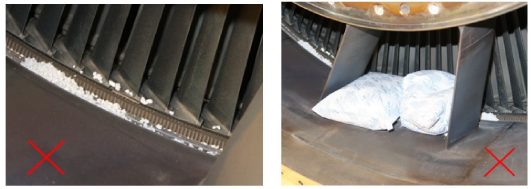3. PRESERVING THE ENTIRE ENGINE
When your engine’s going to be unused for some time, avoid condensation—which leads to rust. Keep it in a dry environment where there are no major temperature swings.
Storing the engine inside a hangar may not be sufficient since the temperature could fluctuate when the doors open and close or in cold weather conditions. To protect the engine, we recommend placing desiccant bags in it and sealing off all its openings. You could also remove the engine from the aircraft and put it in a vacuum-sealed bag with desiccant bags inside. In either case, you should monitor the humidity level inside the bag or engine using an indicator that will alert you by changing color.
No matter what kind of engine you have, moisture is your enemy. Materials like steel and magnesium are vulnerable to corrosion from water. If you protect the whole engine with no fuel or oil in it, you can keep it in serviceable condition until you’re ready to use it again.

